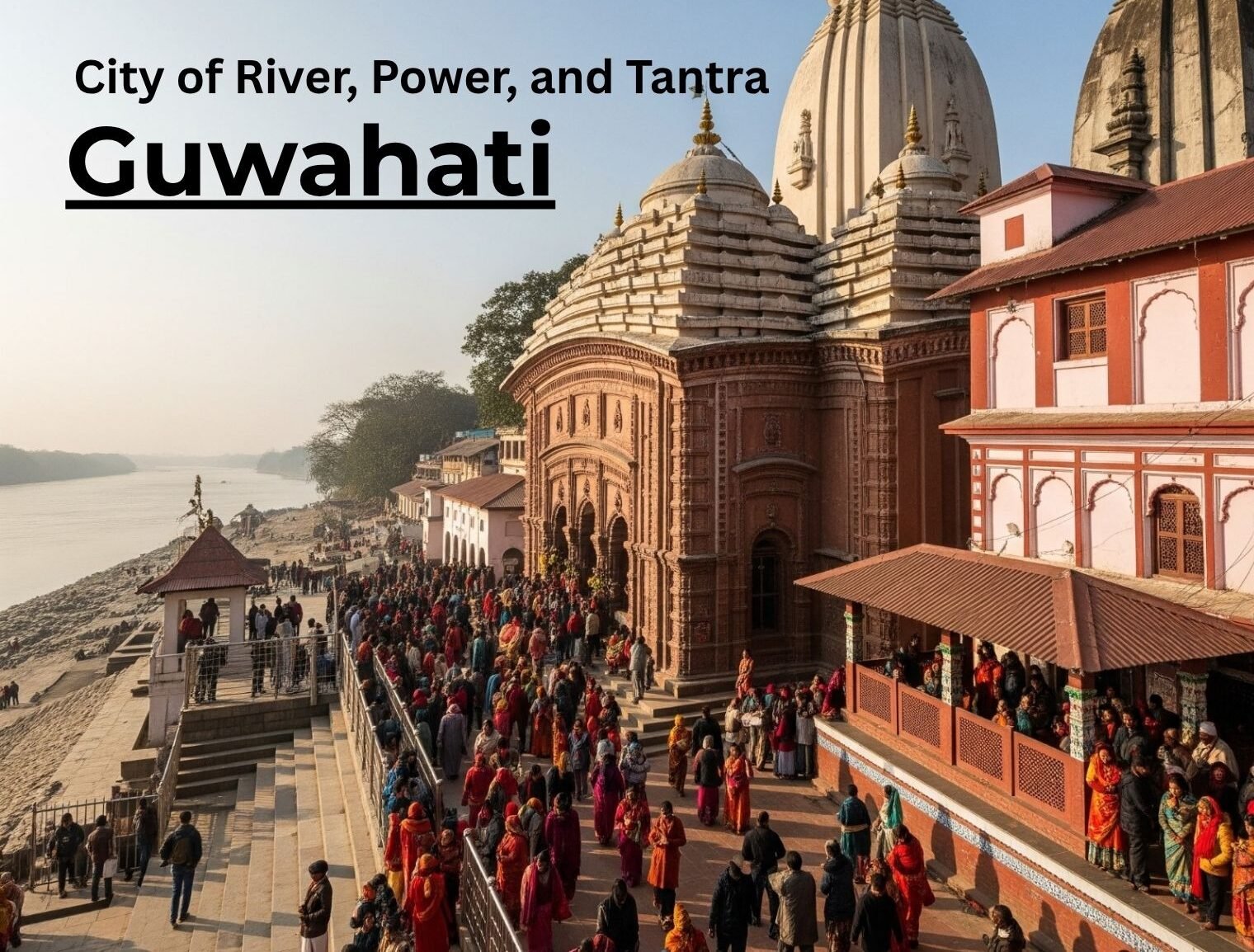The flight from Delhi to Guwahati is a journey across more than just geography; it’s a passage into the heart of Northeast India, a region that pulses with a rhythm entirely its own. I arrived in Assam’s capital with a notebook full of questions and an embarrassing lack of knowledge about its history. I left with a soul stirred by the raw power of the divine feminine, the immense spirit of the Brahmaputra river, and the simple, profound warmth of its people.
For those planning to explore this incredible gateway city, here’s a quick overview. The absolute spiritual epicenter is the revered Kamakhya Temple, a must-visit for its unique Tantric traditions. For breathtaking views, the ropeway across the Brahmaputra at sunset is unparalleled. To feel the city’s pulse, an early morning trip to the Uzan Bazaar Fish Market is essential. My advice: opt for a local homestay over a luxury hotel for a truly immersive cultural experience.
Arrival in the Gateway City
Landing in Guwahati, I was greeted by my driver, Nandkishor, whose stories became my first introduction to Assam. We drove through a city that felt both ancient and modern. I chose a homestay nestled in a quiet lane, a decision that immediately connected me to the local pace of life. The conversations with my hosts over morning tea were more valuable than any guidebook.
Kamakhya: In the Sanctum of the Divine Feminine
My first pilgrimage was to the Nilachal Hills, home to the Kamakhya Temple. This is one of India’s most powerful and significant Shakti Peethas. What makes it unique is that there is no idol in the sanctum sanctorum. Instead, devotees worship a rock fissure in the shape of a yoni (vulva), fed by a natural spring.
This is worship in its most primal, potent form—a celebration of fertility, creation, and the divine feminine energy that flows through all of life. The temple’s connection to Tantra and its reverence for the goddess’s menstrual cycle makes it a place of immense, untamed power. Standing in the womb-shaped, dimly lit inner sanctum was a deeply intimate and humbling experience, a connection to a form of faith that predates written scriptures.
The Brahmaputra: The Lifeline of Assam
You cannot understand Guwahati without understanding the Mahabahu Brahmaputra. This is not just a river; it’s a spiritual entity, a lifeline that shapes the land and the lives of its people.
- The River Ropeway: I took Asia’s largest river ropeway just before sunset. Gliding high above the vast, shimmering expanse of water, with the city lights beginning to twinkle, was a moment of pure magic and perspective.
- Mahabahu Brahmaputra River Heritage Center: This beautifully curated museum is housed in a former Deputy Commissioner’s bungalow from the British era. It tells the story of the river’s ecological and cultural significance. It’s a peaceful oasis of knowledge, a perfect place to spend a quiet afternoon.
- Brahmaputra Carnival: I was lucky to catch this festival on the riverbanks. The air was alive with music, the aroma of Assamese food, and the joy of families celebrating together. In that festive crowd, I felt a pang of loneliness, a moment of vulnerability missing my own friends, which somehow made the experience even more real and human.
The City’s Everyday Heartbeat: Bazaars and Colonial Echoes
To find the city’s soul, I woke up before dawn and headed to the Uzan Bazaar Fish Market. The organized chaos, the calls of the vendors, the vivid colours of the fresh catch, and the steam rising from countless tea stalls—this was Guwahati at its most authentic. It’s a paradise for photographers and anyone who loves to observe daily life.
Nearby, the Northbrook Gate, built in a British Gothic style, stands as a reminder of the city’s colonial past, its architecture a stark contrast to the indigenous designs of temples influenced by dynasties like the Ahoms.
A Conscious Traveler’s Guide to Guwahati
- Respect Temple Protocols: At Kamakhya, be prepared for long queues. Dress modestly and be mindful of the unique rituals. Photography is restricted in the inner sanctum.
- Plan Your Transport: After evening events like the sound and light show at the heritage center, transport can be scarce. On one occasion, I had to walk back, which was an adventure in itself. Plan accordingly.
- Embrace Local Food: Don’t leave without trying the local delicacies at the carnival or small eateries. The flavours are unique and delicious.
- Engage with Humility: My honest admission to locals was often, “I didn’t know much about Assam’s history before today.” This opened doors to wonderful conversations and a deeper understanding.
- Choose Your Experience: Go to Uzan Bazaar for energy, the Mahabahu Heritage Center for peace, and Kamakhya Temple to feel a power that is ancient and undeniable.
A Final Reflection
I came to Guwahati with a map, but I left with a feeling. It’s the formidable energy of Kamakhya, the majestic expanse of the Brahmaputra, and the simple warmth of a shared cup of tea. Guwahati is not just a gateway to the Northeast; it’s a powerful destination in its own right, a city that holds its sacred traditions close while pulsing with a vibrant, modern life. It leaves you with more questions than answers, and a deep desire to return and continue exploring.

Leave a Reply